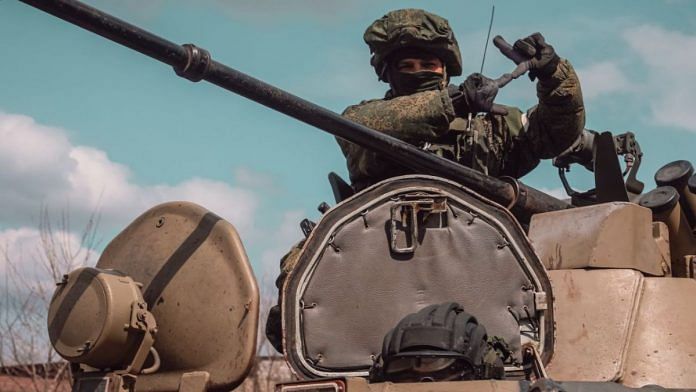New Delhi: With the Ukraine war approaching its seven months with no end in sight, Russian President Vladimir Putin on Wednesday signed an executive order declaring “partial mobilisation”, which means drawing the country’s military reservists to go to the battlefield.
Citing federal laws from 1996 to 1998, the order calls up civilians to serve in the Russian armed forces. They will be extended the same status and level of pay as military personnel in the armed forces under contract, which will remain valid until the partial mobilisation period has concluded, except in cases of dismissal.
Notably, the order calls on “the highest officials” of Russia’s “constituent entities” to ensure the conscription of civilians into military service for the partial mobilisation within time limits set by the Defence Ministry for each “constituent entity”.
The grounds for dismissal from service include reaching the age limit, being declared medically unfit for service or in extreme circumstances, “in connection with the entry into force of a court verdict on the imposition of a sentence of imprisonment”.
Those exempted from the conscription include civilians working for defence companies, who have the right to deferment as long as they remain employed by these firms.
Students will also be exempted from the mobilisation, Russia Defence Minister Sergei Shoigu said.
Earlier on Tuesday, Putin had met with the heads of Russian defence industry firms, calling on them to increase and modernise production capacities as well as maximise equipment usage, streamline production cycles and expedite production deadlines.
Also read: Faced with reversals in Ukraine, Vladimir Putin calls up reserve forces among citizens
Number game
The Kremlin has so far been tight-lipped about details related to the exercise in terms of numbers. Putin’s executive order leaves it up to the government and regional officials to determine the necessary procedures.
However, Wednesday’s developments appear to be consistent with the Institute for the Study of War’s assessment at the start of the Ukraine war, on Russia’s hybrid cadre-and-reserve conscript system and contract-professional system.
The system generally features two conscription periods – from the start of April until mid-July, and then from the beginning of October until the end of December. However, in apparent preparations for the invasion of Ukraine, Russia had advanced its first conscription period to February, while Wednesday’s partial mobilisation also came earlier than the standard conscription schedule.
“The Russian reserve has over two million former conscripts and contract servicemen on paper, but few are actively trained or prepared for war. Historically, only 10 percent of reservists receive refresher training after completing their initial term of service,” the ISW added.
The Russian defence minister also appeared on the state television news following Putin’s executive order, according to journalist Max Seddon, and claimed that mobilising the country’s reserves adds around 3,00,000 civilians to the armed forces while students will be exempted from the mobilisation.
More from Shoigu:
– calling up the reserves adds about 300,000 men to Russia's forces
– "These are not people who've never seen or heard anything about the army."
– still trying to calm the general public. Students are exempt and "only 1% of mobilization potential" will be used
— max seddon (@maxseddon) September 21, 2022
As such, despite having four times the manpower than its Ukrainian neighbours prior to 24 February, Shoigu labelled the war conditions in Ukraine as “difficult” due to the involvement of Western countries’ forces. The ISW had previously assessed that mobilisation efforts may produce “diminishing returns” and not address structural issues with Russia’s hybrid system.
“The Russians have already used many cadre-and-reserve units in Ukraine, and they have not performed well against the Ukrainians, with some units suffering heavy losses. Russia does not likely have a large reserve of highly skilled contract units remaining, although there are probably some uncommitted forces,” the ISW had claimed in March.
Also read: Russia lures foreigners with citizenship if they fight in Ukraine, hires mercenaries, convicts



